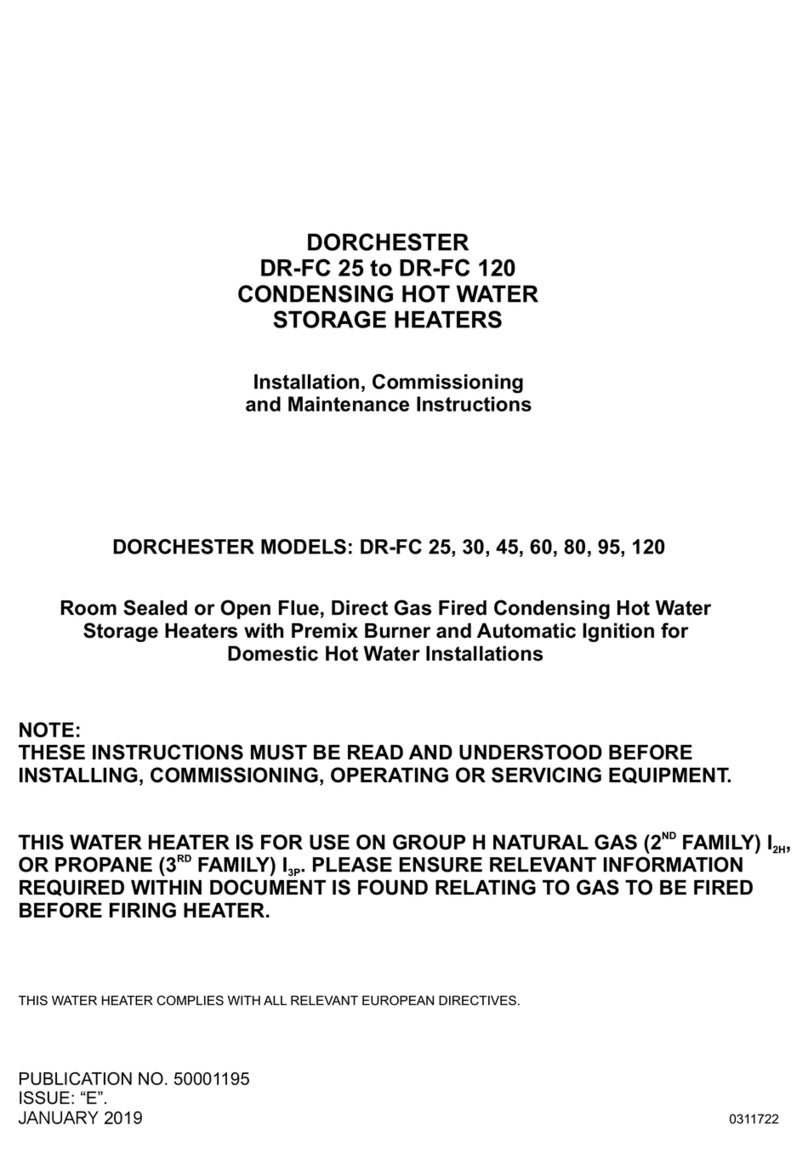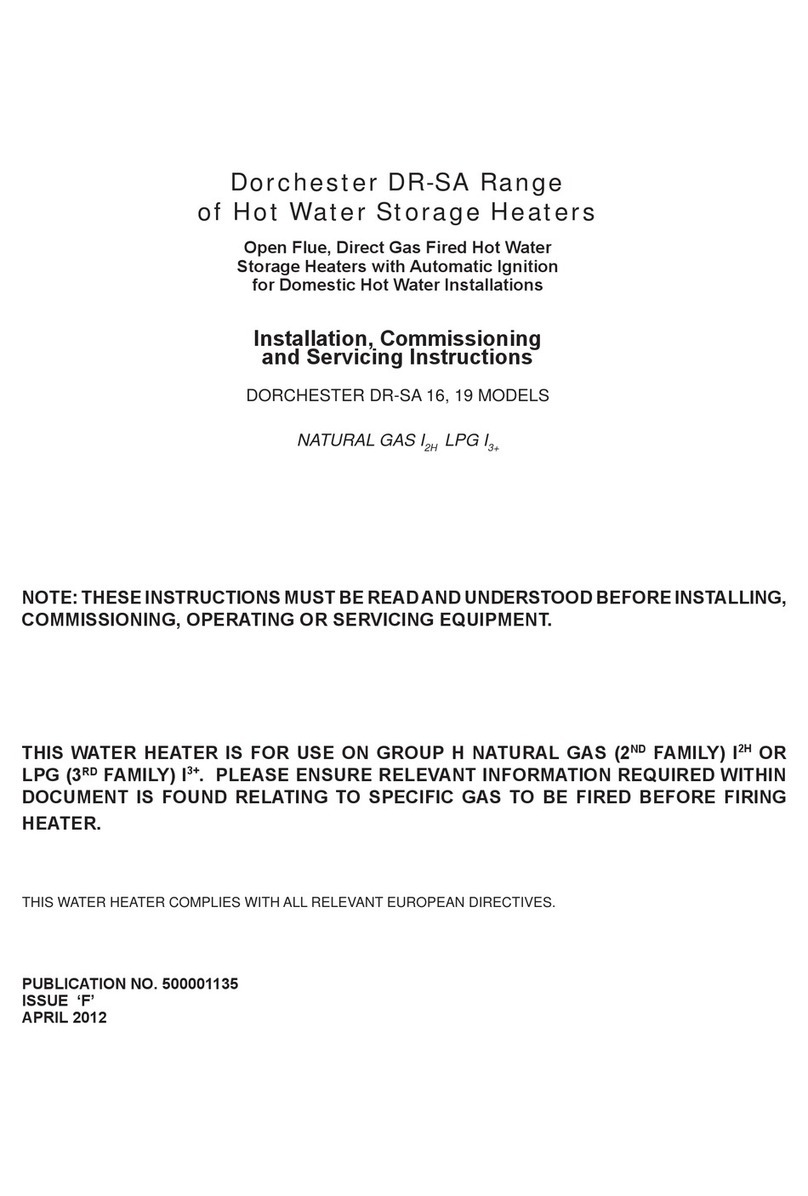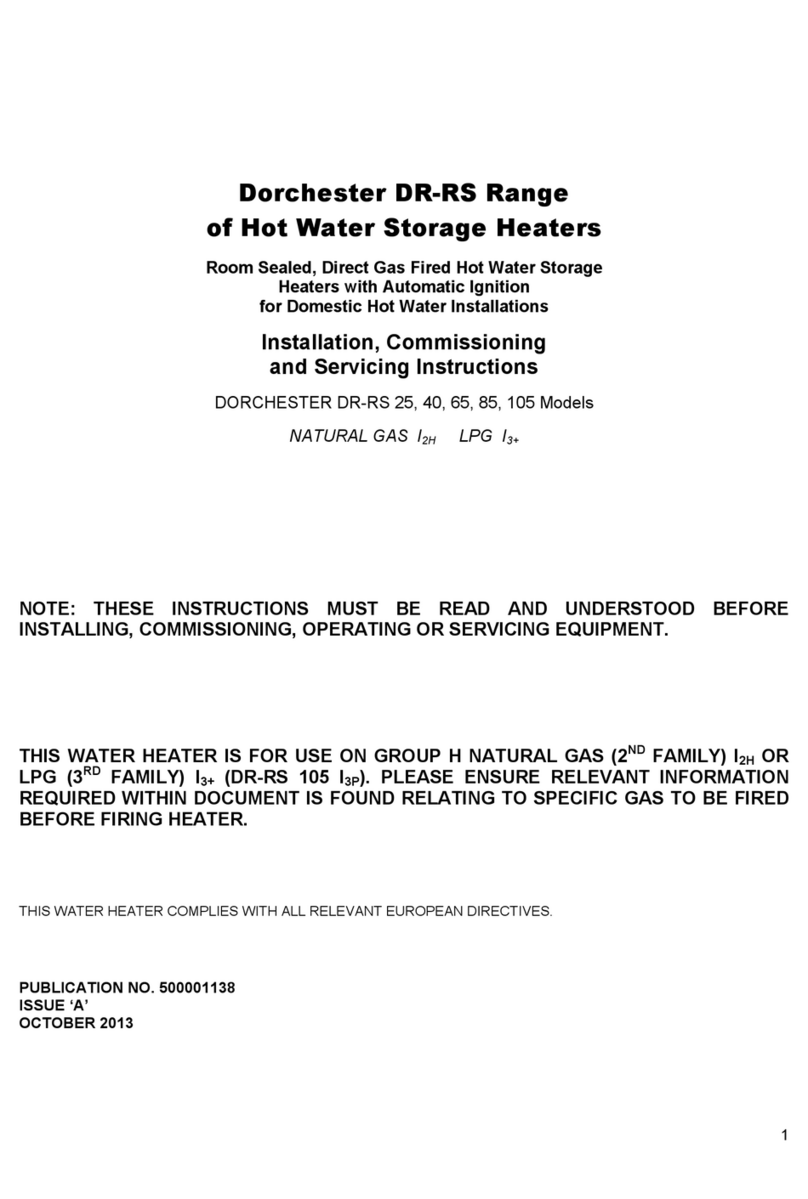
Instruction Manual DR-FC 3
gis
Table of contents
1 Introduction - - - - - - - - - - - - - - - - - - - - - - - - - - - 7
1.1 About the water heater - - - - - - - - - - - - - - - - - - - - - - - - - - - 7
1.2 What to do if you smell gas- - - - - - - - - - - - - - - - - - - - - - - - - 7
1.3 Regulations and documents - - - - - - - - - - - - - - - - - - - - - - - - 7
1.4 Target groups - - - - - - - - - - - - - - - - - - - - - - - - - - - - - - - 8
1.5 Maintenance - - - - - - - - - - - - - - - - - - - - - - - - - - - - - - - - 9
1.6 Forms of notation - - - - - - - - - - - - - - - - - - - - - - - - - - - - - 9
1.7 Overview of this document - - - - - - - - - - - - - - - - - - - - - - - - 10
2 Functioning of the water heater - - - - - - - - - - - - - - - - 11
2.1 Introduction - - - - - - - - - - - - - - - - - - - - - - - - - - - - - - - 11
2.2 Functional description of the water heater - - - - - - - - - - - - - - - - 11
2.3 The water heater’s heating cycle - - - - - - - - - - - - - - - - - - - - - 12
2.4 Protection for the water heater - - - - - - - - - - - - - - - - - - - - - - 12
2.4.1 Water temperature protection - - - - - - - - - - - - - - - - - 13
2.4.2 Gas control - - - - - - - - - - - - - - - - - - - - - - - - - - 13
2.4.3 Fan - - - - - - - - - - - - - - - - - - - - - - - - - - - - - - 13
2.4.4 Pressure switch - - - - - - - - - - - - - - - - - - - - - - - - 13
2.4.5 Flame probe - - - - - - - - - - - - - - - - - - - - - - - - - 14
2.5 Safety of the installation - - - - - - - - - - - - - - - - - - - - - - - - - 14
2.5.1 Unvented installation - - - - - - - - - - - - - - - - - - - - - 14
2.5.2 Vented installation- - - - - - - - - - - - - - - - - - - - - - - 14
2.5.3 T&P valve - - - - - - - - - - - - - - - - - - - - - - - - - - - 14
2.6 Options - - - - - - - - - - - - - - - - - - - - - - - - - - - - - - - - - 15
2.6.1 LPG- - - - - - - - - - - - - - - - - - - - - - - - - - - - - - 15
2.6.2 Unvented Supply - - - - - - - - - - - - - - - - - - - - - - - 15
2.6.3 Top to Bottom Circulation - - - - - - - - - - - - - - - - - - - 15
3 Installation - - - - - - - - - - - - - - - - - - - - - - - - - - - 17
3.1 Introduction - - - - - - - - - - - - - - - - - - - - - - - - - - - - - - - 17
3.2 Packaging - - - - - - - - - - - - - - - - - - - - - - - - - - - - - - - - 17
3.3 Environmental conditions- - - - - - - - - - - - - - - - - - - - - - - - - 17
3.3.1 Humidity and ambient temperature- - - - - - - - - - - - - - - 18
3.3.2 Maximum floor loading - - - - - - - - - - - - - - - - - - - - 18
3.3.3 Working clearances - - - - - - - - - - - - - - - - - - - - - - 18
3.4 Technical specifications - - - - - - - - - - - - - - - - - - - - - - - - - 20
3.5 Installation diagram - - - - - - - - - - - - - - - - - - - - - - - - - - - 22
3.6 Water connections, Unvented - - - - - - - - - - - - - - - - - - - - - - 24
3.6.1 Cold water side - - - - - - - - - - - - - - - - - - - - - - - - 24
3.6.2 Top to bottom recirculating pump - - - - - - - - - - - - - - - 24
3.6.3 Hot water side- - - - - - - - - - - - - - - - - - - - - - - - - 24
3.6.4 Circulation pipe - - - - - - - - - - - - - - - - - - - - - - - - 24
3.6.5 Condensation drainage - - - - - - - - - - - - - - - - - - - - 24
3.7 Water connections, Vented- - - - - - - - - - - - - - - - - - - - - - - - 25
3.7.1 Cold water side - - - - - - - - - - - - - - - - - - - - - - - - 25
3.7.2 Top to bottom recirculating pump - - - - - - - - - - - - - - - 25
3.7.3 Hot water side- - - - - - - - - - - - - - - - - - - - - - - - - 25
3.7.4 Circulation pipe - - - - - - - - - - - - - - - - - - - - - - - - 25
3.7.5 Condensation drainage - - - - - - - - - - - - - - - - - - - - 25
gis


































